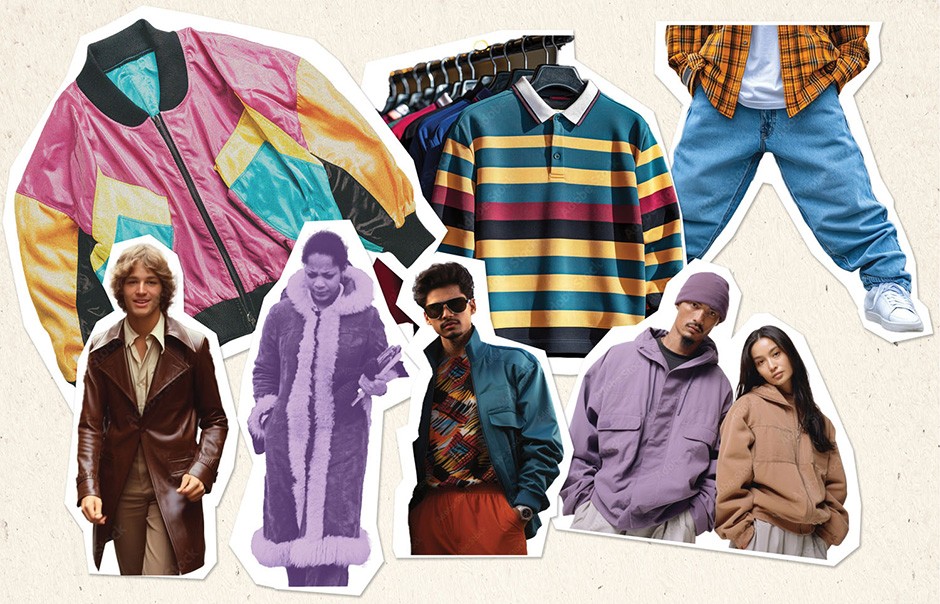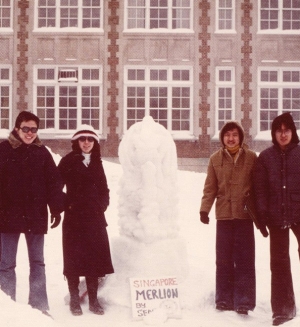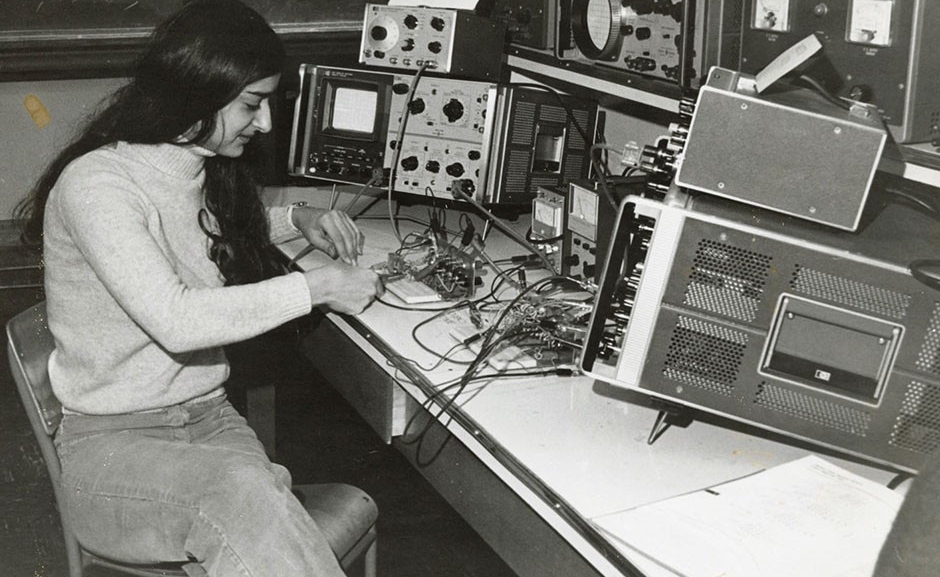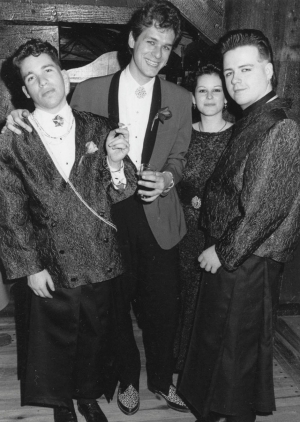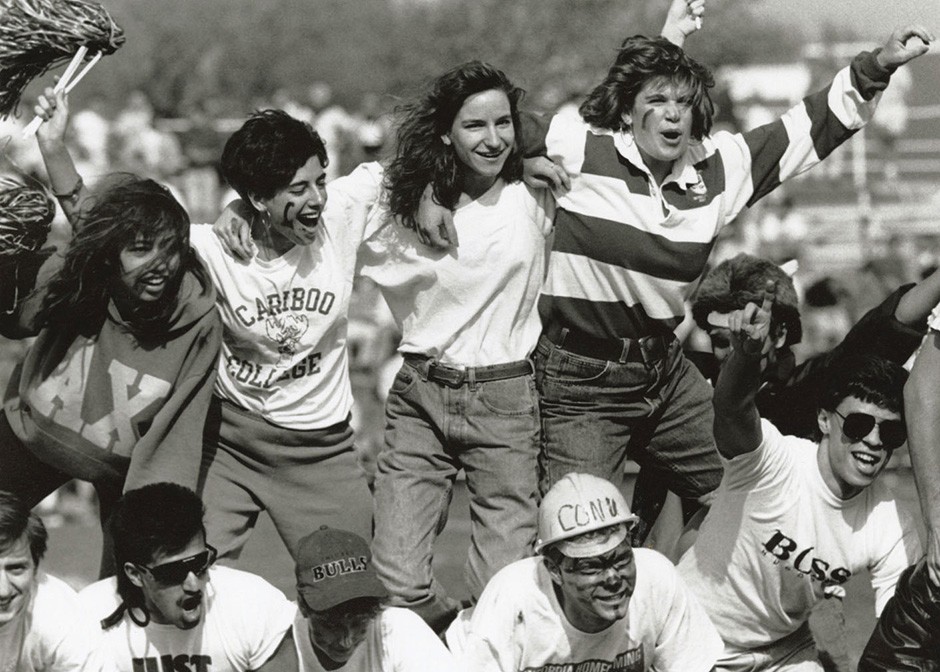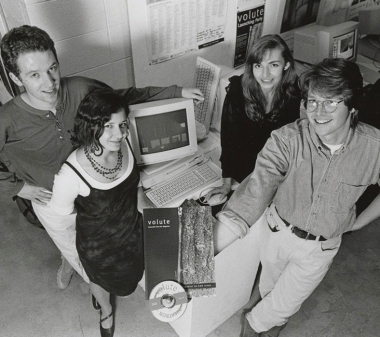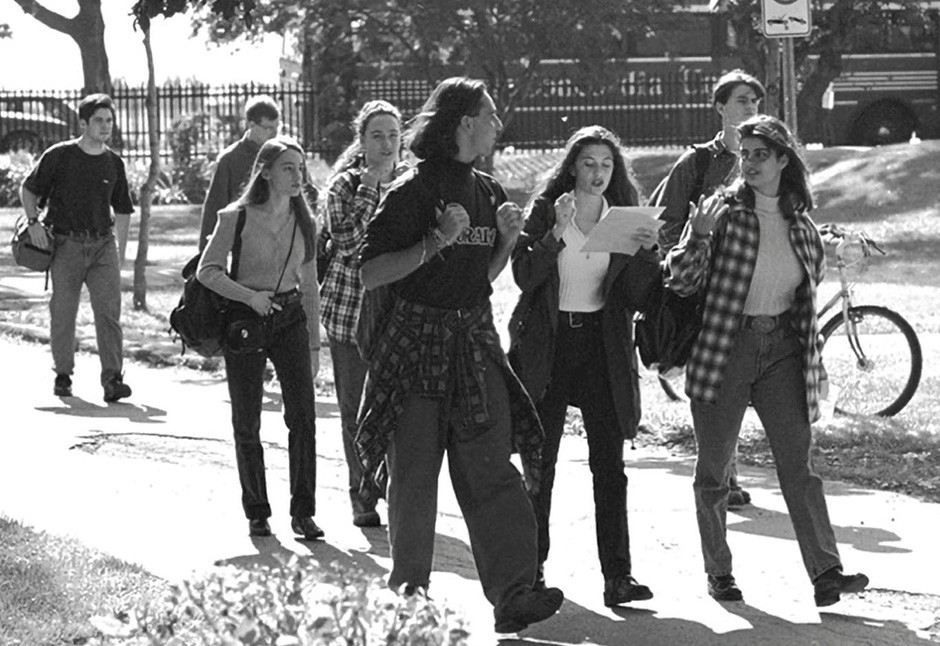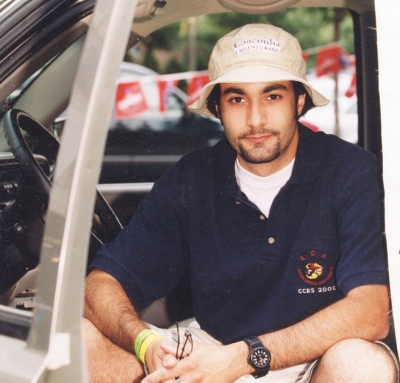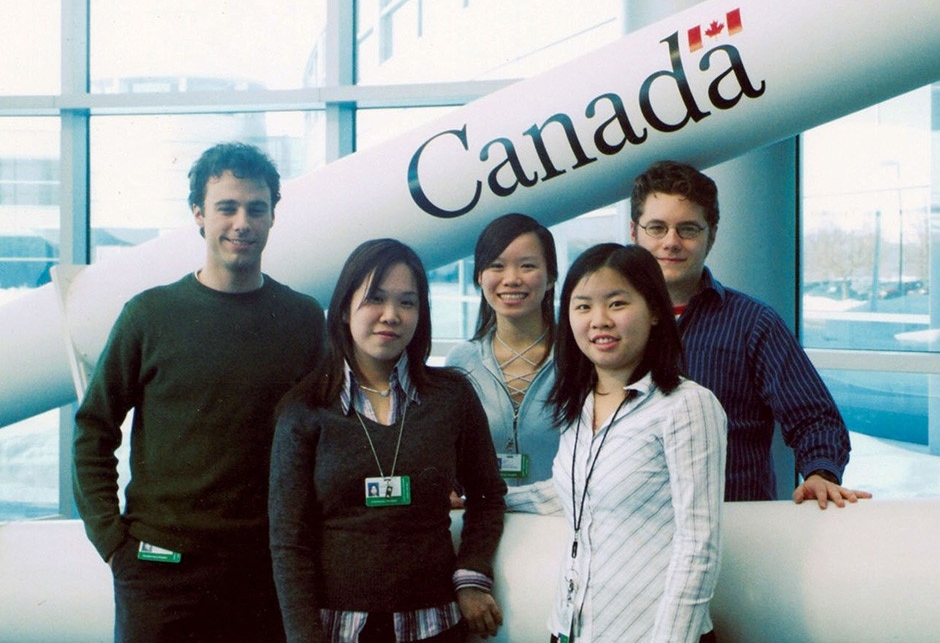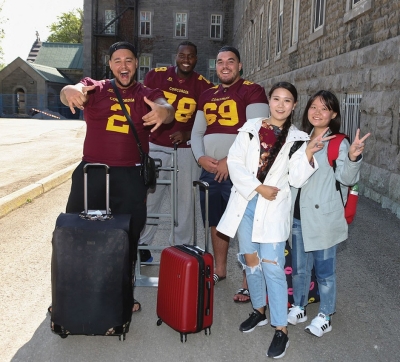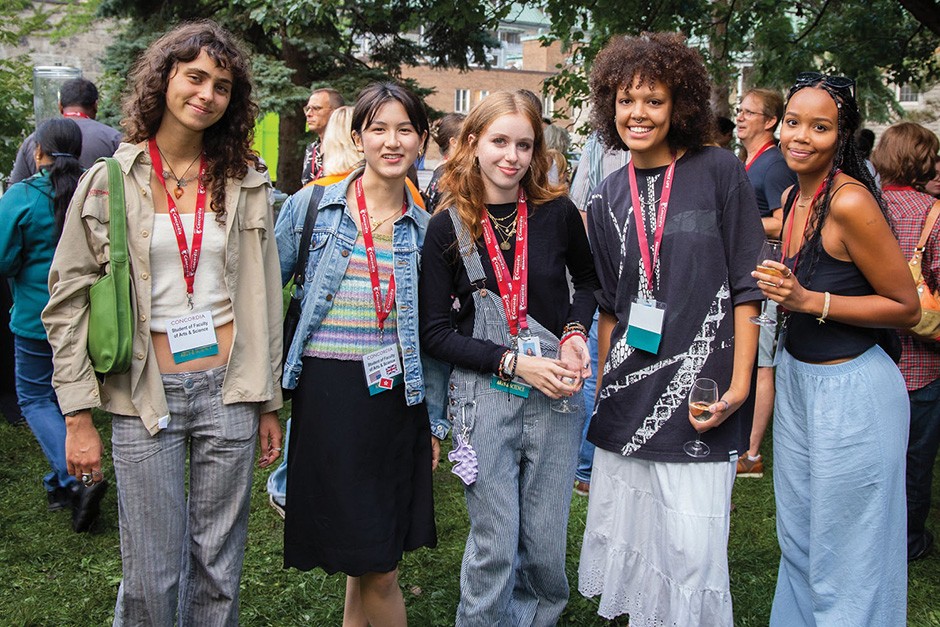British rock icons such as the Beatles and the Rolling Stones popularized mod and shag haircuts, which later made way for the mullet.
Against this backdrop of evolving style, a group of Concordia students — dressed in utilitarian coats, wide-legged and flared pants, and tall boots — take part in the 1979 Winter Carnival snow sculpture contest.


